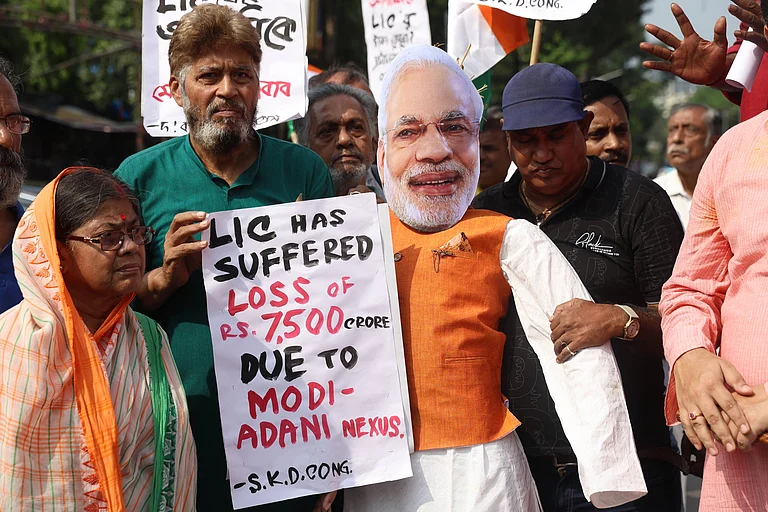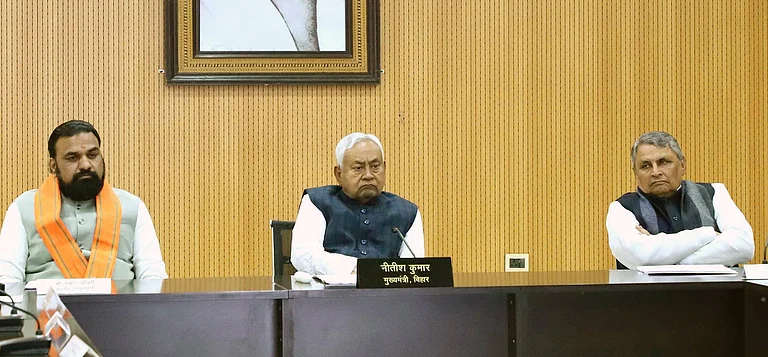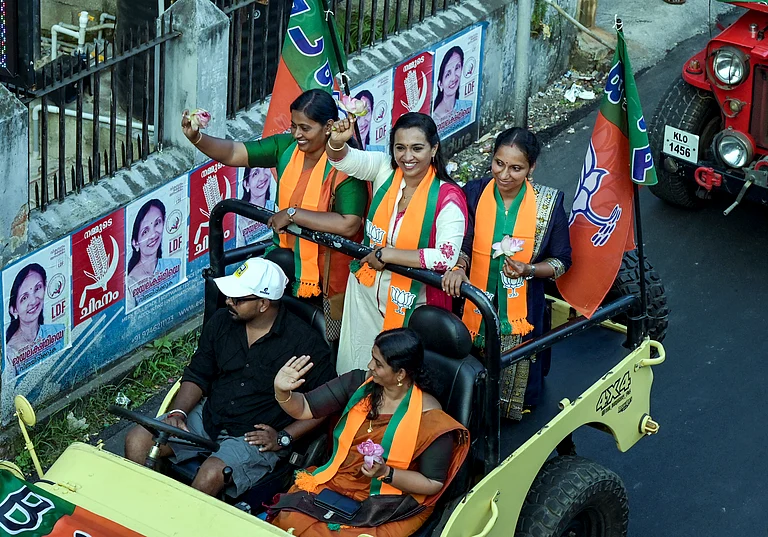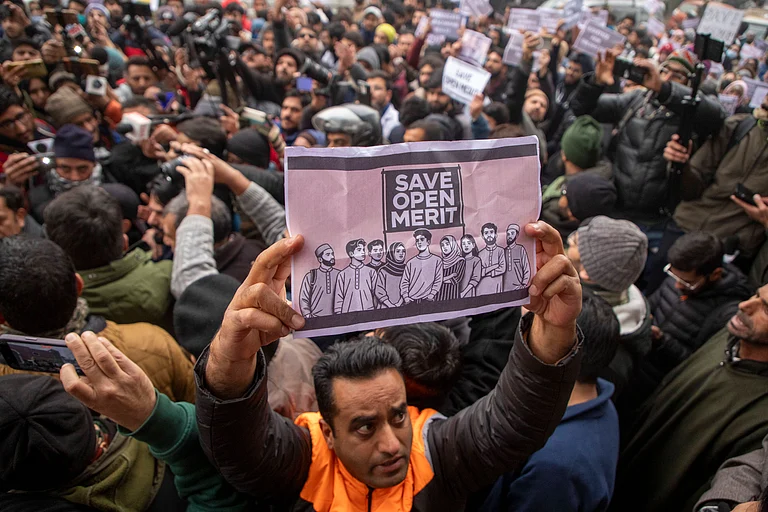In a political masterstroke, the Mahagathbandhan or the Grand Alliance government of Bihar has introduced a Bill in the Assembly to raise the reservation quota by 15 per cent.
It was done just two days after the socio-economic report was tabled in the Bihar Assembly. While tabling the report, Chief Minister Nitish Kumar proposed to increase the reservation. The next day, it was approved in the Cabinet meeting and the next day, the state government introduced the Bihar Reservation of Vacancies in P&S. (SC, ST and OBC) Amendments Bill 2023, which was passed unanimously.
The four-page-long Bill says: “Now, out of all the appointments to services and posts in any establishment in Bihar, which are to be filled through direct recruitment, 65 per cent of the vacancies will be filled from the reserved category and 35 per cent of the vacancies will be filled by general competition.”
At present, there is a provision of only 50 per cent reservation on caste basis, but now reservation in Bihar has been increased to 65 per cent. The Bill provides for 18 per cent reservation for Backward Classes (BC), 25 per cent for Extremely Backward Classes (EBC), 20 per cent for Scheduled Castes (SC) and two per cent for Scheduled Tribes (ST).
In the existing reservation quota, EBC gets the biggest 18 per cent share, SC gets 16 per cent quota and BC gets 12 per cent reservation. With the new reservation Bill, the reservation quota for EBC will be raised by 7 per cent, BC will get 6 per cent raise and SC’s reservation will increase by 4 per cent. Earlier, women from backward class would get 3 per cent reservation, but in the new Bill, this has been scrapped.
If 10 per cent reservation for economically weaker sections (EWS) is added to the now proposed 65 per cent reservation, then the total reservation stands at 75 per cent.
What the data says
Soon after snapping ties with the Bharatiya Janata Party (BJP) and joining hands with the Rashtriya Janata Dal (RJD), Bihar CM Nitish Kumar had initiated the caste census in the state. On October 2 this year, the government tabled the census data.
According to the new data, the BC population in the state is 27.13 per cent and the EBC population is 36.01 per cent. Similarly, SC population, according to the data, is 19.65 per cent and ST population is 1.68 per cent. Muslim population in Bihar stands at 17.7 per cent.
The population data shows that BC and EBC together make up 63 per cent of the population, a major vote bank which can shift the electoral politics. But their socio-economic condition is still in despair. The socio-economic data shows that out of total 94.42 lakh poor families, about 35 per cent families belong to EBC, while 26.1 per cent poor families are from BC. On the other hand, of the total poor families, 11.4 per cent poor families belong to the upper castes, which is 25 per cent of their own population. In the upper caste category, the poverty ratio was found to be highest in Bhumihars, with 27.58 per cent families poor. The government has considered those families as poor whose monthly income is below Rs 6,000.
In government jobs, despite reservation, EBC representation is lower than their population. Of the total state population of 13.07 crore, only 20.47 lakh are in government jobs. Of these, the biggest job holders are from the upper castes, who hold 31.3 per cent of the total jobs. In backward classes, 6.21 lakh persons are in government jobs, which is 30.33 per cent of the total government jobs. EBC is the biggest number in Bihar, but they hold just 22.52 per cent of total government jobs.
Data also shows that in the EBC and BC category, only a handful of castes like Yadav, Kurmi and others, who are politically dominant, have got reservation benefits and many other castes are in extremely poor condition.
Financial benefits for poor
As if the increase in reservation quota was not enough to make the vote share of Mahagathbandhan parties secure, Nitish Kumar announced financial help for the poor on the basis of their socio-economic conditions.
About 94.42 lakh families, who are poor, will get Rs two lakh each as one-time financial help. These families have no jobs, so they will be given Rs two lakh to start their own work,” the chief minister said.
In the socio-economic report, 63,850 families were found to be homeless. The government will provide them with Rs one lakh financial aid to buy land and another Rs 1.20 lakh as financial aid to build homes.
BJP’s dilemma
The socio-economic data and increase in reservation quota have pushed BJP, the principal opposition in Bihar, to the corner.
In the Assembly and outside, the party had to support the bill.
“Whenever the BJP was in power, it supported reservation. Last year, when the NDA was in power, the decision to conduct a caste census in the state was taken and it was started, the results of which were seen today,” Samrat Choudhary, the BJP state president, said.
The BJP has been fighting elections on the sole issue of Hindutva and it succeeded in two consecutive General Elections. But, the caste survey in Bihar and the subsequent demand of the same kind of survey at country level by other Opposition leaders, including Congress leader Rahul Gandhi, has left the BJP in a dilemma.
Publicly, it cannot oppose the demand as BC and EBC alone make up more than 50 per cent of the total population of Bihar.
With RJD and JDU trying to secure the BC, EBC and SC votes by raising their reservation quota, the BJP is trying to focus on the EBC which makes up 36.01 per cent of total population. It has demanded to further raise the reservation quota of EBC.
Chaudhary said: “The BJP is giving more reservation to EBC in Maharashtra and Karnataka so in Bihar, too, the government should further increase their reservation quota to 30 per cent (the government has raised EBC’s reservation quota to 25 per cent).”
A total of 112 castes make EBC. This category was formed by the then Bihar chief minister Karpuri Thakur and he had included 93 castes in this category. Later, more castes were added to it. Hari Manjhi, another BJP leader, said: “Castes were added to it but reservation quota was not increased. So, EBC’s reservation should be more than 27 per cent.”
Will the decision face legal challenges?
The 15 per cent increase in reservation cap is against the 1992 Supreme Court judgment. In Indra Sawhney & Others vs The Union of India case, which is also called Mandal Judgement, a nine-judge bench upheld the ceiling of 50 per cent quotas.
“Reservation being an extreme form of protective measure or affirmative action, it should be confined to a minority of seats. Even though the Constitution does not lay down any specific bar but the constitutional philosophy being against proportional equality the principle of balancing equality ordains reservation, of any manner, not to exceed 50 per cent,” the 1992 orders says.
In the past, many state governments, including Gujarat, Odisha, Rajasthan, Maharashtra and Chhattisgarh, tried to increase the ceiling, but courts rejected their decisions.
Election strategist Prashant Kishore questioned the legal validity of the caste data. He said that the people of Bihar first have to understand that this is not a census but a survey which has no legal basis.
“The reservation system has been decided by the Supreme Court, which is a matter outside the Bihar Legislative Assembly. If the Bihar government wants to make some amendments in it and it can be done under the law of the country, then they should do it,” he said.
Though the upper limit of reservation is 50 per cent, there are provisions through which the reservation ceiling can be increased but for that state governments have to give proper justification.
Journalist and political analyst Ramakant Chandan says: “To increase the reservation quota, the government has to have proper data. Without numbers, the decision is bound to get rejected in court. This is why the Nitish government first did the caste survey and it also came out with socio-economic data.”
The socio-economic data includes many indicators such as pucca houses, income, educational status, migration among others.
“On the basis of this data, the Bihar government can argue in favour of an increase in reservation if anyone goes to court against it,” he says.
A lawyer with the state government says: “We are fully prepared to argue in favour of reservation if any case is filed in the court. We have ample arguments to prove our case.”
He adds: “The 50 per cent ceiling has already been broken by giving 10 per cent reservation to EWS. So if anyone goes to court against the Bihar government’s decision, then the EWS reservation will also be challenged. And this will damage the BJP.”













.jpg?auto=format%2Ccompress&fit=max&format=webp&w=376&dpr=2.0)













